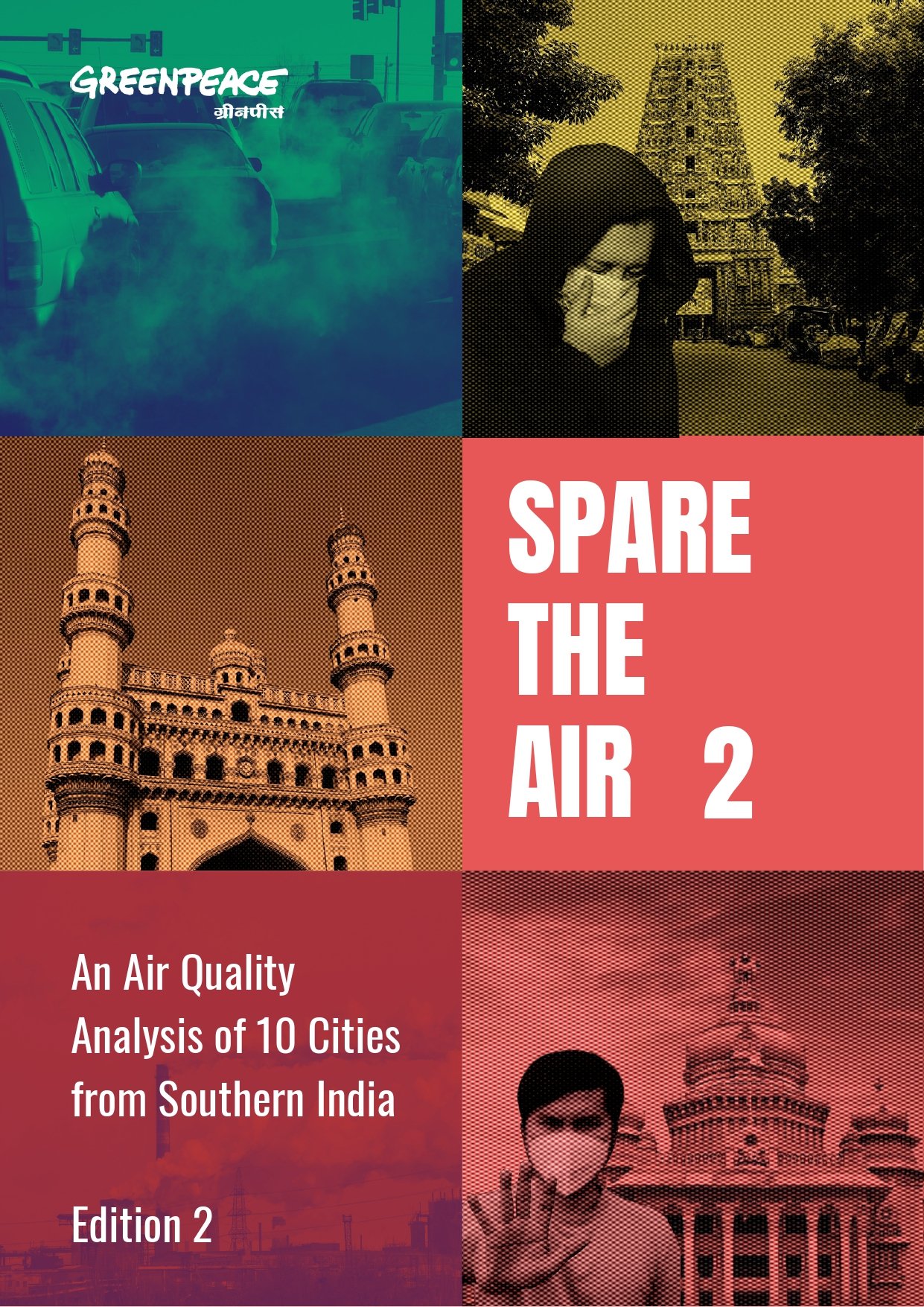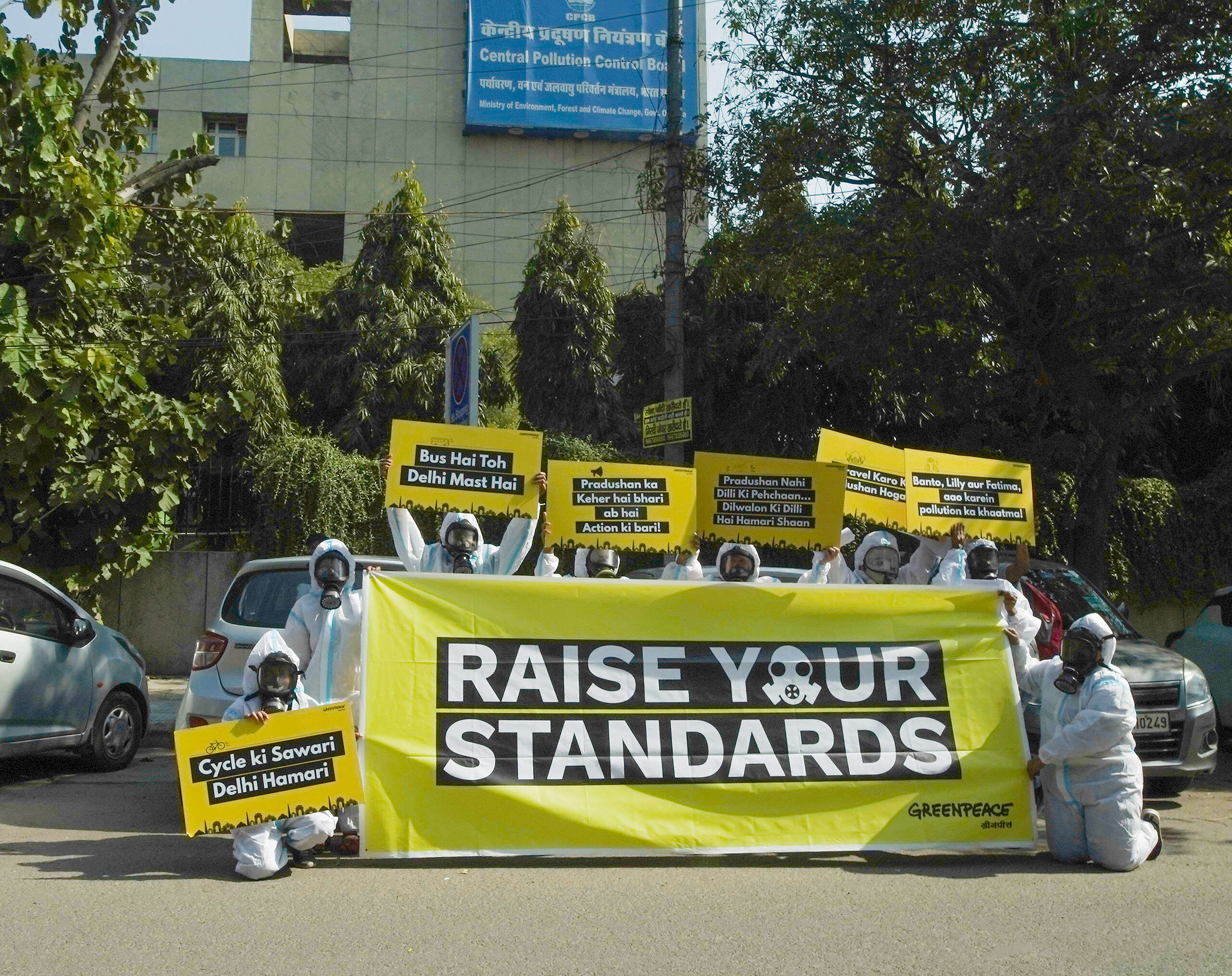Delhi observed the most dramatic increase among all the eight Indian cities studied – Mumbai, Delhi, Bengaluru, Hyderabad, Chennai, Kolkata, Jaipur and Lucknow
New Delhi, July 6: A new report titled “Behind the Smokescreen” by Greenpeace India reveals that a year after initial nationwide lockdowns due to Covid-19, NO2 (nitrogen dioxide) pollution has increased in India’s eight most populous state capitals studied. Among Mumbai, Delhi, Bengaluru, Hyderabad, Chennai, Kolkata, Jaipur and Lucknow, Delhi saw the most dramatic increase between April 2020 and April 2021.
NO2 is a dangerous air pollutant that is released when fuel is burned, as in most motor vehicles, power generation, and industrial processes. Exposure to NO2 can severely impact people’s health at all ages, including the respiratory and circulatory systems and the brain, leading to increases in hospital admissions and mortality.
According to satellite observations, NO2 pollution increased to 125% between April 2020 and April 2021 in Delhi. The analysis also suggests the increase would have been greater had weather conditions been similar to 2020 (a 146% increase from 2020). Although relatively better than the capital, other Indian cities recorded an equally worrying increase in NO2 levels. Mumbai’s NO2 air pollution was 52% higher, Bengaluru by 90%, Hyderabad by 69%, Chennai by 94%, Kolkata by 11%, Jaipur by 47% and Lucknow by 32% in April 2021 compared to the same month last year.
Especially in the context of the pandemic that has a severely impacted India, there is growing evidence that polluted cities are significantly more impacted by the coronavirus. The health impact of fossil-fuel related air pollution is severe and has been reflected time and again in several reports. Yet there has been little change in our reliance on fossil fuels, including coal, oil and gas. Increased economic activity is still largely coupled with toxic air pollution in most cities.
“The air quality levels in these cities are alarming. The cities and the people are already paying a huge price for our reliance on burning fossil fuels, this business as usual cannot continue. People saw clean skies and breathed fresh air during the nationwide lockdown though it was an unintended consequence of the pandemic. The disruption caused by the pandemic is a case to transition to cleaner, equitable and sustainable decentralised energy sources such as rooftop solar and clean and sustainable mobility must be central to recovery efforts across cities. The recovery from the pandemic must not come at the expense of a return to previous levels of air pollution,” said Avinash Chanchal, Senior Climate Campaigner, Greenpeace India.
“Motor vehicles and industries based on fossil fuel consumption are the major drivers of NO2 pollution in Indian cities. The governments, local administration and city planners must initiate the transition from privately owned vehicles to an efficient, clean and safe public transport system that is run on clean energy that of course, must provide Covid-19 related safety measures,” added Chanchal.
Notes:
Link to the graph : https://docs.google.com/document/d/1lMIStrarFHKV8t29COQ3NDuKXtqwih-_fDqA7vvk13s/edit
Download thereport
For any further queries:
Avinash Kumar
+91-8882153664
[email protected]
Rohin Kumar
+91-9013971997
[email protected]
Nischita Verrendra
+91-9845828096
[email protected]



Discussion
Gaseous pollution is the most dangerous and vicious as it can transcend all barriers and move on to other countries through space..mere readings an analytical data is redundant as long as that is used as necessary warning and check the source source..Most of these hazardous gases are emissions from various sources like industries motor vehicles aviation fuels A.Cs..etc..unless we accelerate our research to develop technology that is condusive to the environment like alternate sources of energy or reduce the density of polluting sources all this data is redundant...